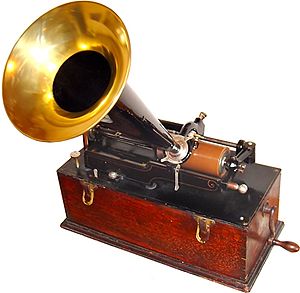
- Image via Wikipedia
Web 2.0 (Social Web) created new platforms for multi-user (beyond two-way) communication that could be both synchronous and asynchronous. Subscribing-to, befriending, and following status updates on platforms such as Facebook, Myspace, Ning Networks, and the like, have allowed for new spaces of communication to emerge. These new spaces resided in a specific place or page where aggregated communiques could be archived.
Twitter is a unique development that allows for the pure mind-surfing thought feeds provided by the status update feature of former platforms. Rather than providing a new space for interactive communication, Twitter provided a portal for calls to action. Whereas the crowd has been gathering in so many "spaces" (Ning, LinkedIn, etc), Twitter is not space-centered but real-time activity centered.
New apps that allow for the formation of select "lists" and "groups" further enhance the new social communication platform where many of us find ourselves interacting today. All this communication has simultaneously created a cloud of data that can be accessed by custom APIs and mashed up to serve any number summary overviews of this brave new networked world. And because of this data deluge, we now have ways to "monitor" or "listen" to the babbling data brook as it flows by. Here are six (6) simple ways to use Twitter as a listening device to monitor activity on any subject matter.
1. Use Twitter's search feature (http://search.twitter.com) to listen to the global crowd converse about your interest, theme, subject, product, or service. Focus on conversations about a particular source (@dallasm12) or topic (#education) or just monitor any tweet containing a keyword of choice (Iran).

2. Limit results of conversations to geographic area by using Twitter's advanced search features. Here is an example of the same topic search above (Iran) but limited to within 15 miles of Chicago...


Don't have a specific keyword to follow? Use http://trendsmap.com to view popular conversations in any particular region of the world. A good way to catch the news before it hits the airwaves.
3. Use desktop applications to monitor many conversations simultaneously. There are many from which to choose. I use TweetDeck illustrated below. Such apps allow multiple, scroll-able columns to display your search inquiries. Searches can focus on keywords, hashtags, users, you name it. There are browser based apps such as Monitter.com that share TweetDeck's look and feel.

4. Follow lists and groups. This is a nice feature in TweetDeck and similar apps (at the top of TweetDeck or on their website at http://www.tweetdeck.com/#directory ). This is a clever way of seeing what a group (your competitor?) is saying about you or your product and/or service, etc. Lists are generated by twitter users who want to gather specific people around a particular topic. By listening to a list's feed, you can stay informed without having to reinvent the search wheel.
5. Discover how people feel about a particular topic, product, company, service, idea, etc. Twendz.com allows you to follow a conversation according to degrees of positive or negative feedback.

6. Create an intellectual community of impact around your search results by participating in the conversations, creating your own RSS feeds, making new lists, forming Groups, and sharing your learning with your colleagues. This is by far the most powerful reason to listen to the conversations. By honing in on topics relevant to our needs, we can learn and share with others. In fact, our own quality input and output will make us a node of impact to which others can subscribe and follow. Then we impact our world for the better and contribute real value to the data stream.
I love history and enjoy researching time-lines and maps of where we've been and where we are today. But the really cool thing about real-time web monitoring is how it allows us to stay on the forefront of cutting edge trends and ideas. You can even listen to what the crowd is NOT saying. See what pieces to the puzzle are missing. Investigate, extrapolate, and engage in higher order critical thinking. Try it. Find a place to sit by the babbling data brook and see what you discover. Share your insights with others. Build a reservoir of knowledge that has impact on your community. (posted 2/4/10)
![Reblog this post [with Zemanta]](http://img.zemanta.com/reblog_e.png?x-id=ea303a03-a43b-4c38-bc8d-bca44bbe2082)